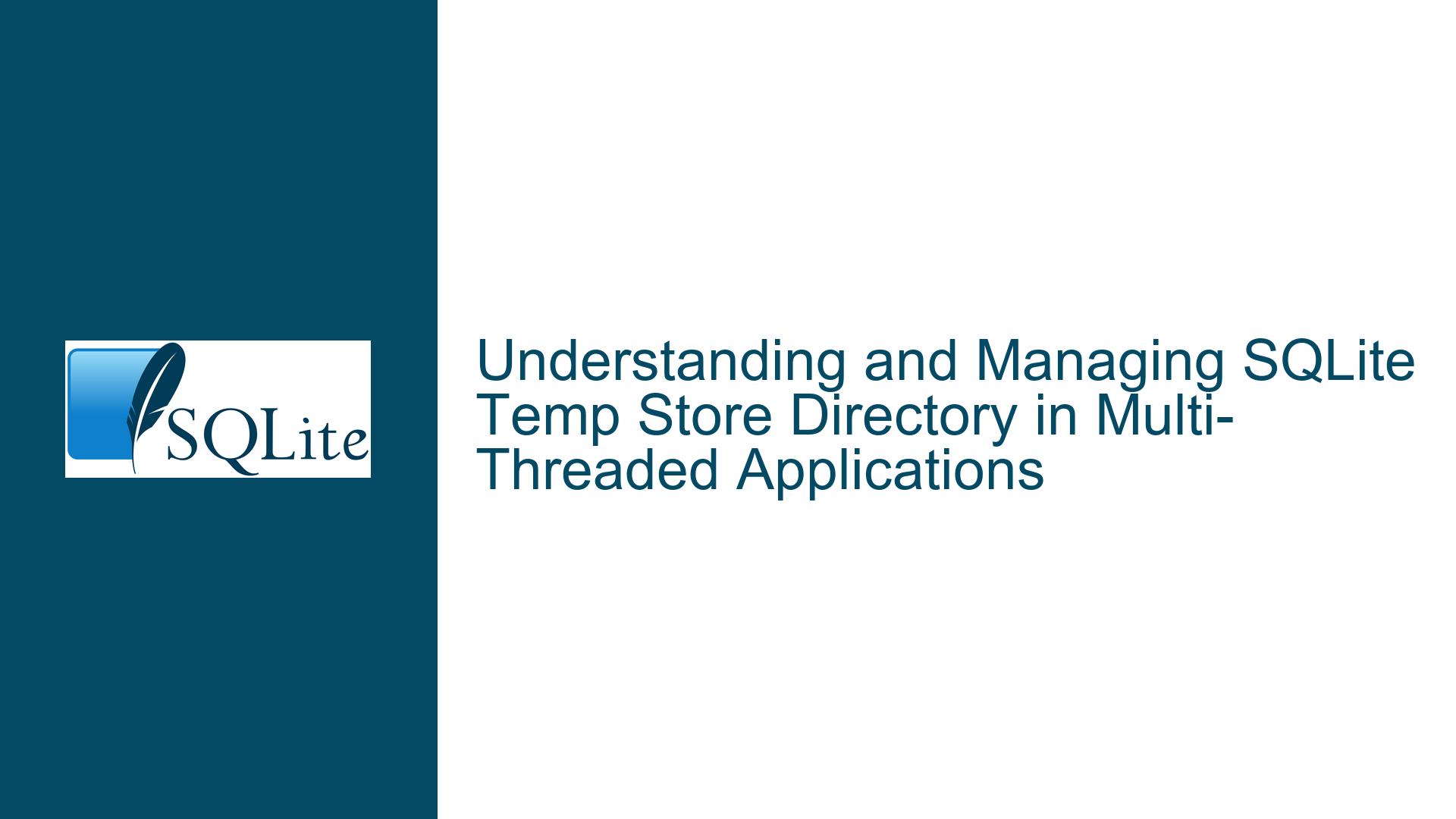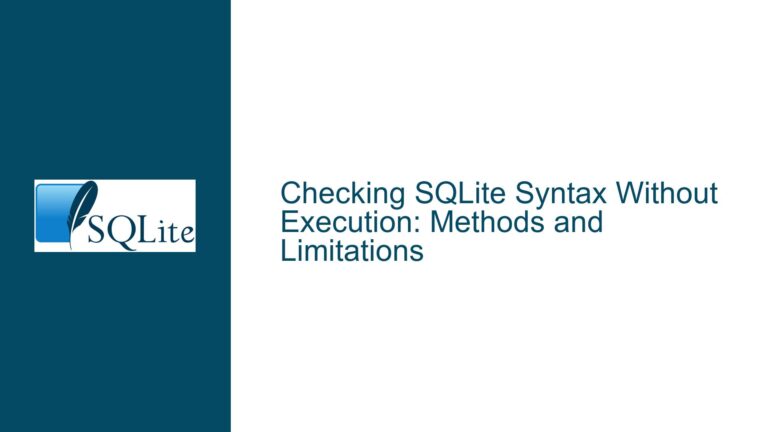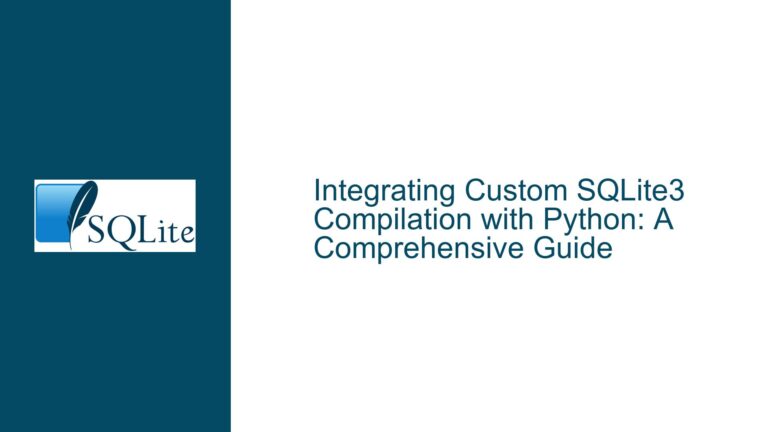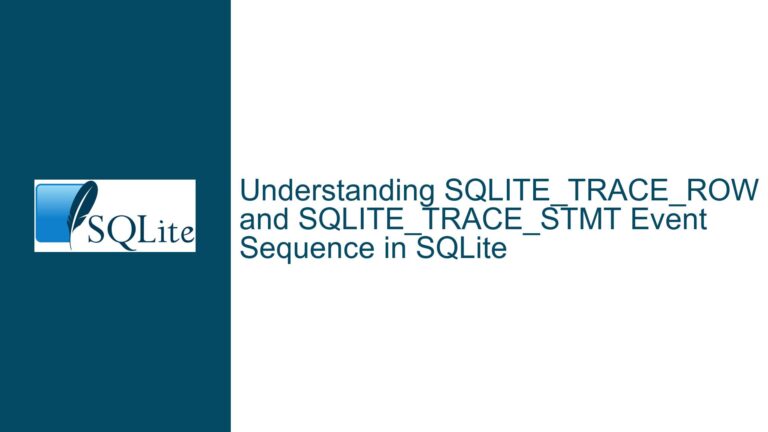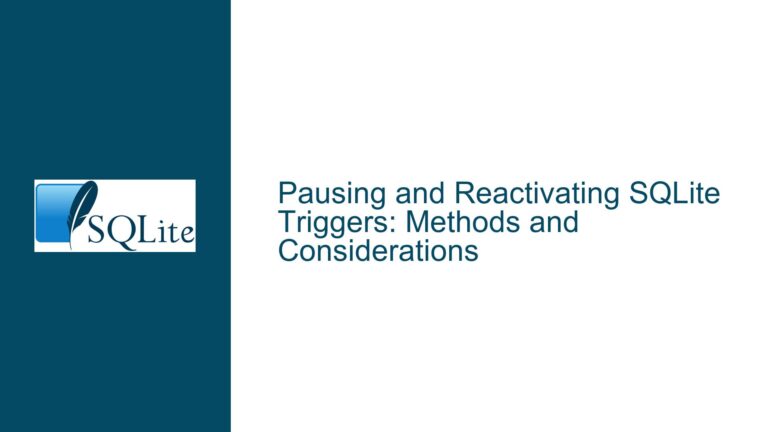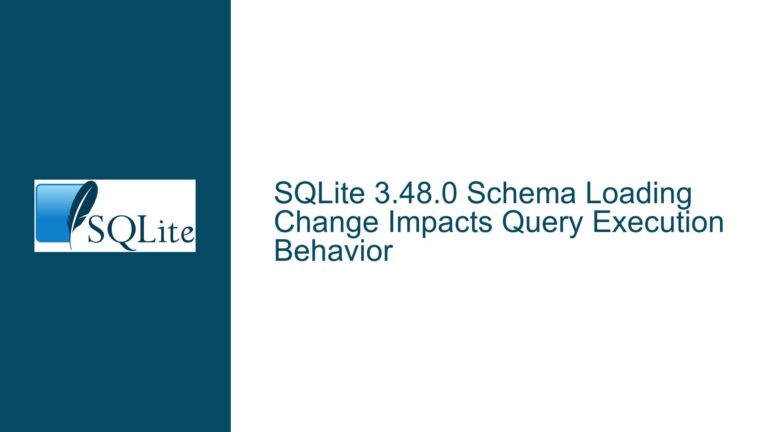and Managing SQLite Temp Store Directory in Multi-Threaded Applications
SQLite Temp Store Directory Behavior in Multi-Threaded Environments
The SQLite PRAGMA temp_store_directory is a setting that determines the directory where SQLite stores its temporary files. These temporary files include transient indices, materializations of views and subqueries, and other fleeting data structures that are created during query execution. The behavior of this pragma becomes particularly complex in multi-threaded applications where multiple database connections are active within the same process. The primary issue arises from the fact that the temp_store_directory setting is process-wide, not connection-specific or thread-specific. This means that changing the temp_store_directory in one thread can affect all other threads and connections within the same process, leading to undefined behavior if not handled carefully.
The PRAGMA temp_store_directory is also deprecated, which adds another layer of complexity. While it remains functional for backward compatibility, its use is discouraged in new applications. This deprecation raises questions about the best practices for managing temporary file storage in modern SQLite applications, especially in multi-threaded environments where each thread may need to operate on a different database.
Interrupted Write Operations and Global Variable Conflicts
The core of the issue lies in the global nature of the sqlite3_temp_directory variable, which is not protected by a mutex. When the temp_store_directory setting is changed, it updates this global variable, which is then used by all connections within the process. If this change occurs while another thread is actively using SQLite interfaces, the behavior is undefined and can lead to severe issues such as data corruption or application crashes.
The problem is exacerbated by the fact that the temp_store_directory setting is not thread-safe. This means that if one thread changes the temp_store_directory while another thread is executing SQLite operations, the second thread may end up using an inconsistent or invalid temporary file directory. This can result in temporary files being written to the wrong location, or worse, temporary files being deleted prematurely, leading to data loss or corruption.
Another potential cause of issues is the misunderstanding of what constitutes a "temporary file" in SQLite. Temporary files in SQLite are not just any files that are created and deleted during the operation of the database. They are specifically files that are used for transient operations, such as statement journals, materializations of views, and transient indices. These files are meant to be fleeting and are automatically managed by SQLite. However, if the temp_store_directory is changed inappropriately, these files may not be managed correctly, leading to interference between different database connections.
Implementing Environment Variables and Safe PRAGMA Usage
To address these issues, it is crucial to understand the alternatives to using the deprecated PRAGMA temp_store_directory and how to safely manage temporary file storage in a multi-threaded environment. One of the most straightforward solutions is to use environment variables such as TMPDIR or SQLITE_TMPDIR to set the temporary directory for the entire process. These environment variables are read by SQLite at startup and determine the location where temporary files will be stored. By setting these variables before starting the application, you can ensure that all threads and connections within the process use the same temporary directory without the need to change it dynamically.
If you must use the PRAGMA temp_store_directory, it is essential to set it only once, before any database connections are opened or any threads are started. This ensures that the sqlite3_temp_directory global variable is set correctly before any SQLite operations begin, reducing the risk of conflicts or undefined behavior. Once the temp_store_directory is set, it should not be changed for the duration of the process.
Another approach is to use separate processes for each database connection instead of threads. This way, each process can have its own temp_store_directory setting without affecting the others. While this approach may introduce additional overhead, it provides a clear separation between different database connections and eliminates the risk of global variable conflicts.
For logging purposes, it may be necessary to determine the current temp_store_directory being used by SQLite. Unfortunately, SQLite does not provide a direct way to query the value of the sqlite3_temp_directory global variable. However, you can infer the temporary directory by creating a temporary object, such as an empty database, and then querying the underlying filename using SQLite’s APIs. This will reveal the directory where SQLite is storing its temporary files at that moment.
In conclusion, managing the temp_store_directory in a multi-threaded SQLite application requires careful consideration of the global nature of the setting and the potential for conflicts between threads. By using environment variables, setting the temp_store_directory only once, or using separate processes, you can avoid the pitfalls associated with this deprecated pragma and ensure that your application runs smoothly and reliably.
